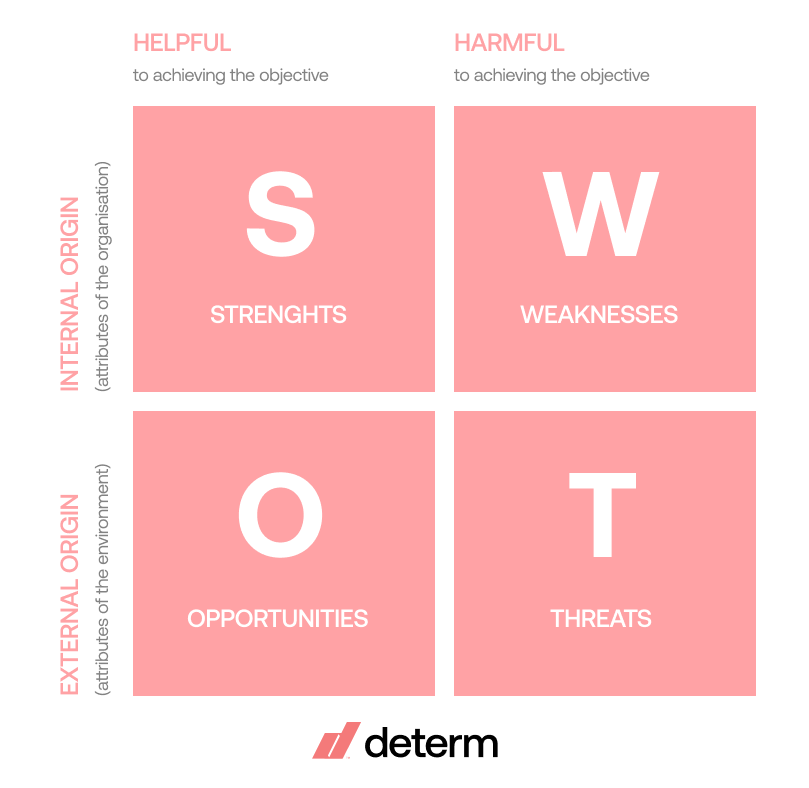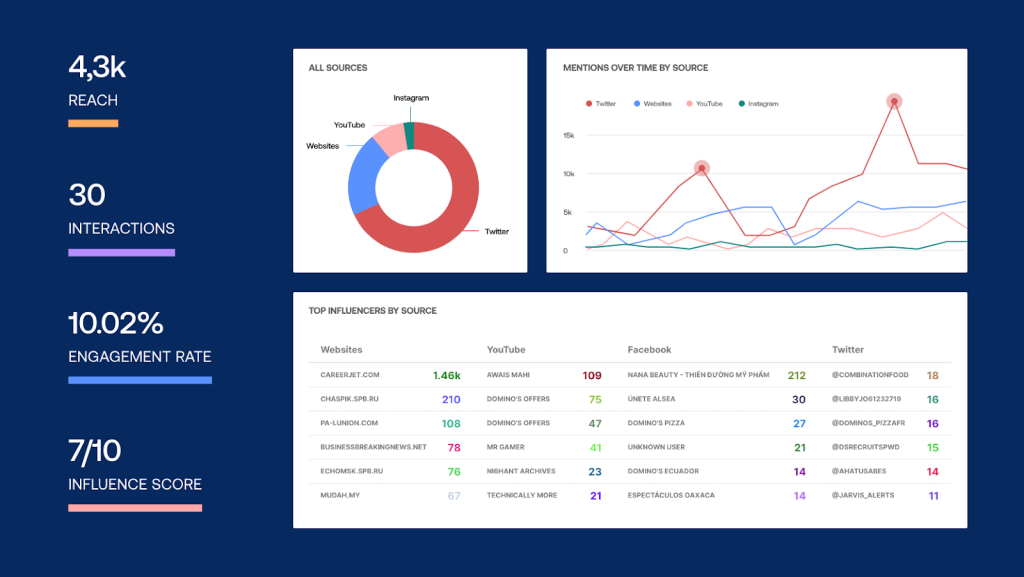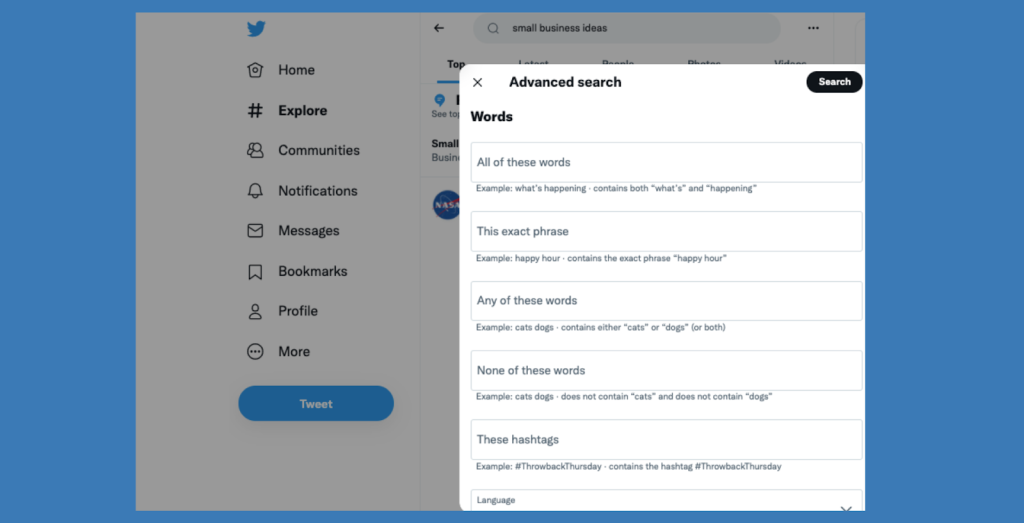In 2024, a whopping 89% of people are using Twitter, otherwise known as X, to find new products and services. As one of the largest social platforms on the planet, Twitter has become a key destination for consumer targeting, with over 450 million users to choose from.
💡 Read: Competitive Analysis: All You Need to Know
In order to perform well on Twitter, it’s important to know what your competition looks like. Brands that want to succeed will have to know their competitors inside and out. This includes their competitor’s growth rate on the app, engagement stats and, of course, their content strategy.
With these key points in mind, it could be time to think about conducting a Twitter competitor analysis. Not only does this help you dissect your competitors’ performance on Twitter, but a competitive analysis aids you in finding out exactly where your brand stands in the fight to win consumer attention.
Stick with us as we jump into the benefits of conducting a competitive analysis and teach you how to get started in six easy steps.
What Is A Twitter Competitor Analysis?
Put simply, a Twitter competitor analysis is the process of examining a competitor’s performance on Twitter.
Brands often use this tactic to gain further insight into their competitor’s success while also gathering tips and tricks from competing brands that may help improve their own targeting strategy.
Based on the findings of the competitor analysis, brands can create an action plan, that not only targets the same demographic but outperforms any competing businesses.
Read Twitter Monitoring 101: How to Stay Aware of Your Twitter Mentions

Some of the key metrics observed in a Twitter competitor analysis include:
- Number of total Twitter Followers
- Engagement rate (including likes, retweets and replies)
- Number of daily tweets/content strategy
- Account growth rate
- Demographic insights
These metrics aim to aid a brand in understanding where it stands on social media in comparison to its competitors and help uncover the underlying issues it must fix with its own social media strategy for continued success.
The key questions to ask yourself during a Twitter competitive analysis are, ‘Are there gaps in my social strategy?’ and ‘Is there something my competitor has missed that I can offer to our shared audience?’. Using these takeaways to benchmark your own performance is the key to finding success when using a competitive analysis strategy.
Read 3 Easy Ways to Monitor Competitors in Your Industry
How To Track Competitor Tweets In 6 Simple Steps
In order to improve your own Twitter strategy, your competitor’s strengths, weaknesses and overall strategy must be reviewed. One of the easiest ways to grow your own following on the platform is to build on their successes and learn from their mistakes.
With this in mind, let’s take a closer look at how to complete your own Twitter competitor analysis in six simple steps.

1. Identify Your Key Competitors
Before you perform a competitor analysis, you first need to identify your competitors.
There are a number of ways to do this, ranging from a simple Google search for business-related keywords to leaning into popular demographic hashtags on Twitter itself. Here are some of the key strategies to engage with when hunting for your Twitter competitors:
- Google Search: One of the quickest ways to identify a competitor is to see where they rank in a Google search. Start by typing in keywords that you aim to rank for as a brand, and take a look at the brands that appear before you in a Google search result. These will often be the brands that are also competing with you in a social space and your key targets to overtake.
- Top Followers on Twitter Analytics: Twitter itself also has an analytics function. Using the Twitter analytics panel, you can check your own top followers with a quick search. Using this tactic, you can see what other brands your top followers are engaging with and target those brands in your competitor analysis.
- Trending Hashtags: If you’re operating within the same demographic, you and your competitor are bound to share hashtags. Why not click on the trending hashtags relating to your industry, and see what brands are ranking at the top of the results?
Read Which is the Best Hashtag Tracker in 2024?
2. Set Your Performance Benchmarks
Once you’ve identified your competitors, it’s time to discover what you want to get out of your competitor analysis.
The key here is to define clear goals that you want to achieve out of your Twitter strategy and work towards them with a set of performance benchmarks.
A great way to start this is to use a common PR tactic known as a SWOT analysis.

Spending time finding out your strengths, weaknesses, opportunities and threats as a brand is a great way to identify key performance goals. These will then help inform your competitor analysis strategy and what you hope to achieve from it.
For example, why not set benchmarks based on your current Twitter statistics? As you review your competitors, you may aim to improve the performance of your tweets or your engagement rate in comparison to your competitors.
Once you have achieved a higher engagement rate than your competitor’s tweets, you can conclude that your Twitter efforts are meeting and exceeding desired results.
3. Analyse Your Demographic
In order to conduct a successful Twitter competitor analysis, you must also have a strong understanding of your audience, as well as the brands you’re reviewing.
This includes analysing the characteristics of your shared followers. In order to fully understand your demographic, you must learn more about audience trends, interests, location and behaviour to create a campaign that properly targets your potential leads.
Once you’ve gathered information about your demographic, apply this data to your competitor’s strategy and see how they are responding to current trends and specific demographic behaviour. This could highlight successful strategy tactics or help you discover areas for competitor improvement that you can use to your advantage.
Read How to Master Competitive Positioning While Staying True to Your Brand
4. Use Social Media Monitoring Tools To Track Engagement
As you engage in a Twitter competitor analysis, social listening will become your best friend. The key here is to utilise social media monitoring tools such as Determ to track the success of competitor tweets and their content strategy.
Analyse the content your competitor shares, their post frequency, their engagement metrics and their mentions in order to identify how they are performing on social media.
Once you have a list of competitors, you can track their key metrics to help you assess how their account performs in comparison to yours.
Using a data analytics and reporting tool such as the one from Determ, you can quickly view the reach, engagement rate and interaction score of competitor content, giving you an insightful overview of their Tweet success.

The key here is to track a competitor’s content strategy on Twitter as a whole rather than one well-performing tweet. In doing this, you’ll be likely to see a pattern of where they are performing well and where they need improvement.
Why not also perform a sentiment analysis? Social listening is often most successful when you track brand mentions as well as direct interactions. Analysing how consumers talk about your competitor’s brand is a great way to find out more about how their content is received.
Read Brand Monitoring 101: Tips, Strategies & Tools
5. Map Competitor Content Themes
On the topic of mapping content, it’s also important to step away from the metrics and view a competitor’s Twitter content as if you were a follower.
Evaluate how your competitor approaches a content strategy. What topics do they cover? How do they create their tweets? How do they approach visual content? Is there a theme?
These are just a few questions to ask yourself as you review a competitor’s Twitter strategy. If you can see a content pattern/theme, analyse how well that works and draw inspiration from it.
Your content should always be unique, but if you see a topic/trend that has worked well for a competitor, it could be time to create your own version of it.
Posting frequency is also important. Try to map how often your competitor posts on their feed and examine how effective it is. With the ability to automatically create and schedule content in 2024, thanks to the introduction of AI in social media, your competitive analysis may find that brands are posting more than ever before.
6. Monitor Trending Hashtags and Keywords
Last but not least, let’s have a closer look at hashtag and keyword monitoring. Working in the same way as a search engine, Twitter also gives you the ability to search for content based on a specific hashtag or keyword.
Using their advanced search feature, you can find brands on Twitter that rank for the same keyword as you. It’s important to do this as well as a Google keyword search, as those who rank above you in a social search are likely to be different to those on Google.

Identifying popular keywords and hashtags used by competitors can give you a greater insight into the current trends within the industry.
Better still, keep an eye on how frequently and consistently these hashtags and keywords are used within competitor content. This information could reveal their strategy on how a competitor aims to keep their tweets visible in a sea of social content.
Read How to use Determ for Twitter Competitor Analysis?
Are You Ready To Start Your Own Competitor Analysis?
Tracking your competitor’s success is a smart way to stay on top of your game when it comes to social media marketing.
With trends online continuously changing, viewing how your competitors approach shifting consumer behaviour, viral content marketing, and hashtag trends is a great way to gather inspiration for your own social media goals.
The key here is to set performance benchmarks early and use your competitor analysis to frequently monitor your progress in comparison to competing accounts.
As Twitter evolves and X becomes the new norm for social media marketers, preparing for a new sea of content trends is vital if you want to ride the tidal wave.
Book a demo if you want to know how Determ can help you with your competitor analyisis!


